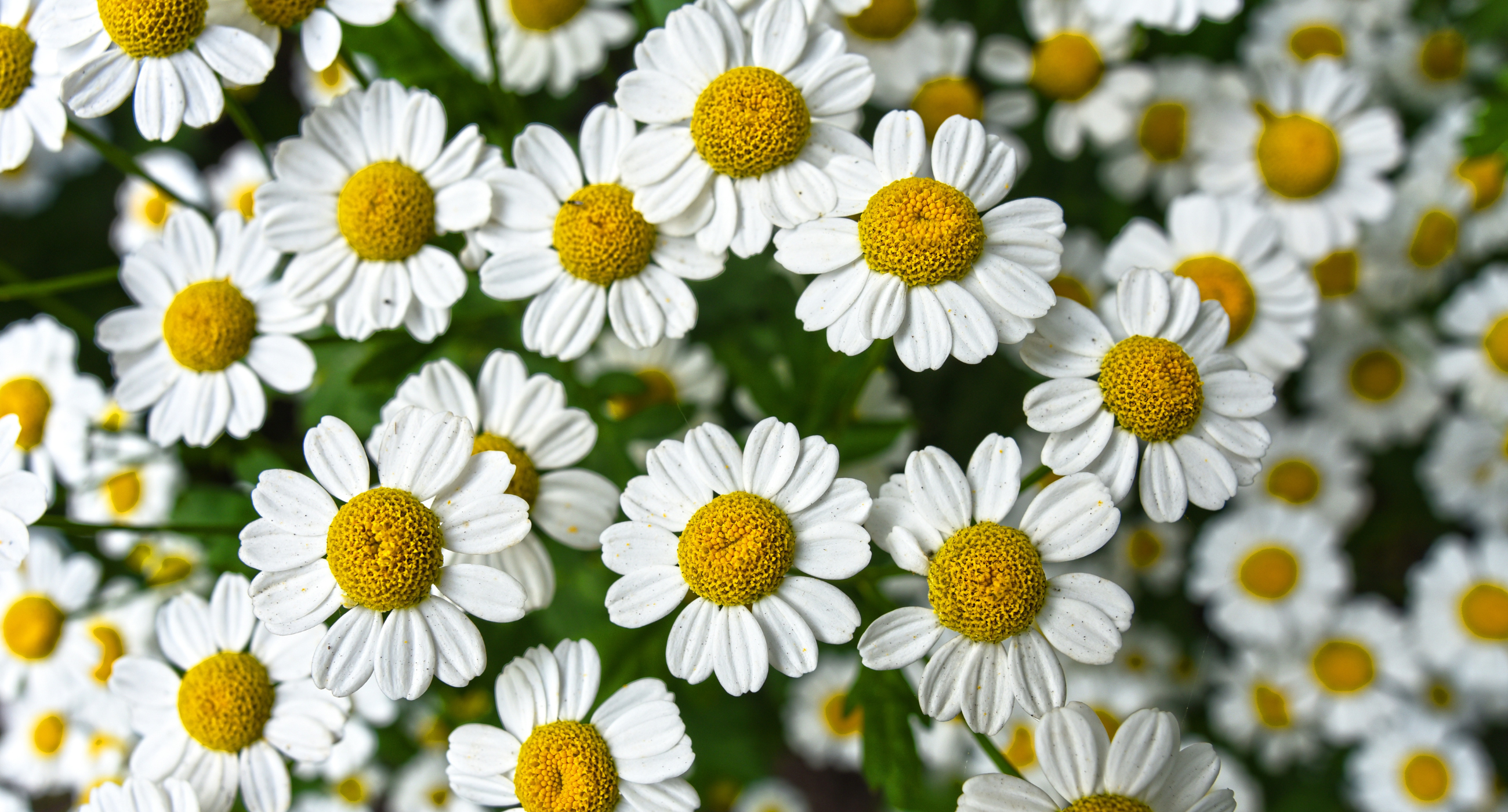
Chamomile
Scientific Name: Matricaria chamomilla (German chamomile), Chamaemelum nobile (Roman chamomile)
Herbal Profile: Chamomile
Botanical Name:
- Matricaria chamomilla (German chamomile)
- Chamaemelum nobile (Roman chamomile)
Family:
- Asteraceae (daisy family)
Description:
Chamomile is a well-known herb with small, daisy-like flowers and feathery leaves. The plant typically grows to about 20-30 cm (8-12 inches) in height. German chamomile is an annual plant, while Roman chamomile is a perennial.
Parts Used:
- Flowers: The most commonly used part of the chamomile plant.
Constituents:
- Volatile oils: Including bisabolol, chamazulene, and matricin.
- Flavonoids: Such as apigenin, quercetin, and patuletin.
- Coumarins: Including herniarin and umbelliferone.
- Other compounds: Phenolic acids, tannins, and mucilage.
Traditional Uses:
- Digestive Aid: Chamomile is commonly used to relieve gastrointestinal disturbances such as indigestion, bloating, and gas.
- Calming and Relaxation: Often used in teas to promote relaxation and help with sleep disorders such as insomnia.
- Anti-inflammatory: Applied topically or consumed to reduce inflammation.
- Skin Conditions: Used in creams and ointments for skin irritations, eczema, and minor wounds.
- Menstrual Pain: Taken to alleviate menstrual cramps and other symptoms of PMS.
Medicinal Actions:
- Anti-inflammatory: Reduces inflammation both internally and externally.
- Antispasmodic: Helps to relax muscle spasms, especially in the digestive tract.
- Sedative: Calming effect on the nervous system, aiding in sleep and relaxation.
- Carminative: Relieves flatulence and settles the digestive system.
- Vulnerary: Promotes healing of wounds and skin irritations.
- Mild Astringent: Tightens and tones tissues, especially helpful for skin conditions.
Preparation and Dosage:
- Tea: Infuse 1-2 teaspoons of dried flowers in hot water for 10 minutes. Drink 1-3 times daily.
- Tincture: 1-4 ml, 1-3 times daily.
- Topical Use: Apply creams, ointments, or compresses as needed to affected areas.
Precautions:
- Allergies: Individuals allergic to plants in the Asteraceae family (such as ragweed, marigolds, daisies) may experience allergic reactions.
- Pregnancy and Breastfeeding: Generally considered safe, but it’s always best to consult with a healthcare provider.
- Interactions: Chamomile may interact with blood-thinning medications, so caution is advised for individuals on such medications.
Research:
- Studies have supported chamomile’s effectiveness in reducing anxiety, improving sleep quality, and its anti-inflammatory properties.
Other Uses:
- Cosmetics: Incorporated in various skin and hair care products due to its soothing and anti-inflammatory properties.
- Aromatherapy: Chamomile essential oil is used in aromatherapy for its calming and relaxing effects.
Chamomile is a versatile and widely used herb known for its gentle yet effective healing properties. It’s a staple in many herbal medicine cabinets and is valued for its ability to promote relaxation, soothe the digestive system, and support skin health.
1
/
of
2
Sarah's Herbal Garden
Sweet Dreams {Herbal Tea Blend for Sleep}
Regular price
$12.00 USD
Regular price
$0.00 USD
Sale price
$12.00 USD
Unit price
/
per
Shipping calculated at checkout.
Share


